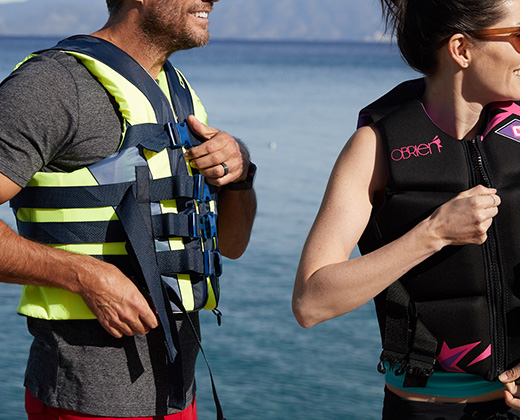How to Paddle a Canoe
Bolster your canoeing basics with these Pro Tips on how to paddle a canoe.
A day spent canoeing can make for a great adventure – if you know how to steer. With the help of Mark Palinsky, a Senior Factory Representative at Old Town Canoe & Kayak Co., Pro Tips breaks down everything you need to know about paddling a canoe.
ANATOMY OF A CANOE PADDLE
The first step in paddling a canoe is having the proper grip. To understand where to grip the paddle, it’s important to know a paddle’s anatomy. A canoe paddle includes:
- Top grip: Palinsky refers to this as a “T toggle.” This is the small handle at the end of the paddle. Grips come in a variety of different shapes and sizes.
- Shaft: The shaft is the midsection of a paddle. It helps you transmit power to the blade.
- Throat: This is where the paddle’s shaft meets the blade.
- Blade: The blade is the part of the paddle that touches the water. Blades vary in size based on a canoer’s needs. A smaller blade is less tiring to use, while a longer blade offers paddlers more control.
- Tip: A canoe paddle tip is the bottom part of the blade. Tips are either square or rounded.
Keep in mind that choosing the right canoe paddle will have an impact on your ability to comfortably paddle.
HOW TO HOLD A CANOE PADDLE
To properly grip a canoe paddle, you’ll start by placing your upper hand on the top grip. Meanwhile, you should place your lower hand near the bottom of the paddle shaft.
A common mistake is keeping your upper hand too high or too low. Palinsky says that you should always keep your knuckles level with your shoulder.
“When they are level with your shoulder, much like a prizefighter, [you have] the most power right at shoulder height,” Palinsky says.
Much like a fighter has a hard time getting a knockout when his arm is too high or too low, paddling is also more difficult when your arm is out of position.
It’s these simple things that Palinsky says make a big difference at the end of the day.
CANOE PADDLING STEP BY STEP
Many paddlers believe they should reach forward to grab water. However, Palinsky says the key to proper technique is to think of the paddle as a lever.
Start with your top hand at your shoulder, loaded up with your elbow bent. From here, partially push off with your left arm. Keep your right arm fixed in position. This will ensure that you are pushing rather than pulling.
To finish your stroke, slightly rotate your torso and drive forward.
Palinsky says that when paddlers focus on pulling the blade back, rather than pushing forward with their torso, it can lead to fatigue.
“You’re utilizing very minor muscle groups – primarily in your arms – rather than being able to leverage the upper half of your torso to move that canoe forward through the water,” he adds.
Now that you know how to paddle, it’s time to find a canoe and start practicing your paddling skills. Get started by checking out these Pro Tips on how to buy a canoe.








